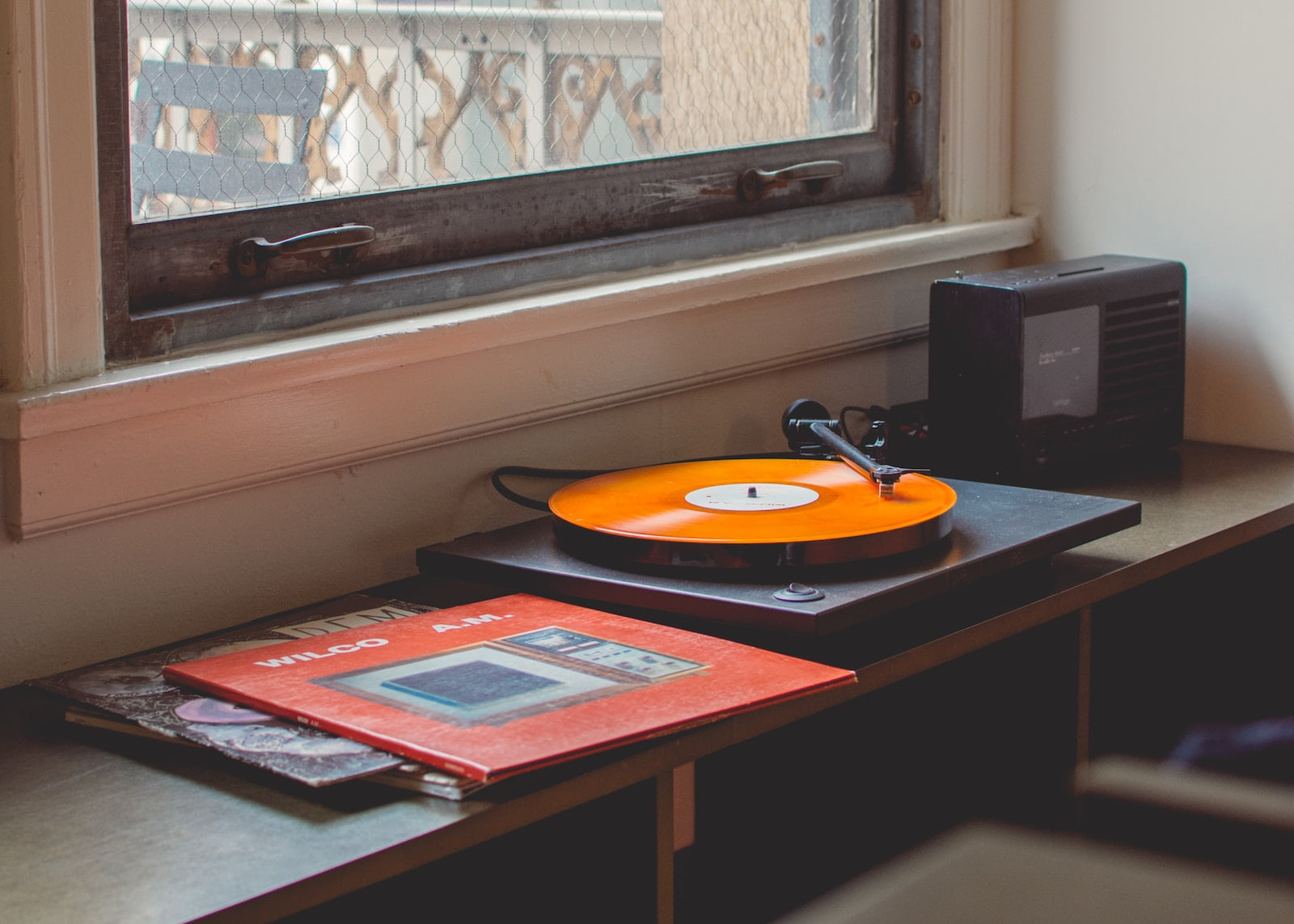There are several differences between HiFi and DJ turntables in terms of design principles and components:
1.Tonearm: HiFi turntables typically have a shorter and straight tonearm that is designed for accurate tracking of the record grooves, whereas DJ turntables have a more robust, curved (S-shaped) tonearm designed for scratch and cueing.
DJ turntables often have an S-shaped tonearm because this shape is optimal for scratch and cueing techniques commonly used by DJs. The S-shaped tonearm has a curved shape that allows for a more precise tracking of the record grooves, even during rapid movements. This means that the needle stays in the groove better during scratching and doesn’t skip or jump, which is crucial for accurate sound manipulation. The S-shape also provides a more balanced weight distribution across the record surface, which helps to reduce the chance of wear and tear on the grooves over time. Additionally, the S-shaped tonearm often has adjustable counterweight and anti-skate settings, which allows DJs to fine-tune the tracking force and ensure a stable, consistent playback while performing.
2. Cartridge: HiFi turntables generally use high-quality cartridges that are optimized for playback, whereas DJ turntables have more robust cartridges that are designed for heavy-duty scratching and manipulation.
HiFi cartridges are designed for high-fidelity music playback and typically have a moving magnet (MM) or moving coil (MC) design. MM cartridges are more common and use a magnet to generate an electrical signal as the stylus moves through the record grooves. They are relatively inexpensive and easy to use, making them a popular choice for entry-level HiFi turntables. MC cartridges, on the other hand, are more expensive and have a more complex design. They use a coil of wire to generate an electrical signal, which results in a more detailed and accurate sound.
DJ cartridges, on the other hand, are designed for heavy-duty use in live performances and have a more robust design. DJ cartridges often have a spherical stylus, which is less prone to skipping or jumping during scratching and cueing. They also typically have a high tracking force to withstand the heavy manipulation that they undergo. Many DJ cartridges also have a replaceable stylus, which makes maintenance and repairs easier and more cost-effective.
3. Platter: HiFi turntables often have a heavy, dense platter made of materials such as glass, aluminum or acrylic, while DJ turntables have lighter platters, which can be easily manipulated for scratching and cueing.
Different platters on HiFi turntables are designed to provide specific sound characteristics and reduce distortion. The materials used for the platter can significantly affect the sound quality of the turntable.
For example, glass platters are often used in high-end turntables because they are very dense and have a very consistent density across their surface. This results in a very stable rotational speed, which reduces wow and flutter, and minimizes distortion.
Acrylic platters are also popular in high-end turntables because they are denser than most other plastics and have excellent vibration-damping properties. This results in a more focused and detailed sound, with less resonance and less distortion.
Aluminum platters are another popular choice because they are very dense and have excellent vibration-damping properties. They are also easy to manufacture, which makes them a more affordable option for many turntable manufacturers.
4. Motor: HiFi turntables have a high-quality motor that is designed for smooth and consistent playback, while DJ turntables have a powerful motor that can spin the platter quickly and maintain stability during heavy manipulation.
HiFi turntables usually are “Belt drive” turntables, which use a belt that connects the motor to the platter. The motor rotates a small pulley, which in turn rotates a larger pulley attached to the platter. The belt acts as a shock absorber, isolating the platter from motor vibrations, which reduces noise and improves sound quality. Belt drive turntables are generally quieter and have less motor noise than direct drive turntables.
“Direct drive” turntables, on the other hand, have the motor directly attached to the platter. The motor rotates the platter directly, without any intervening belts or pulleys. This makes direct drive turntables more reliable, and they have better torque, which allows them to start and stop faster. This is why direct drive turntables are often used by DJs who need to be able to manipulate the platter quickly and with precision.
In terms of sound quality, there is ongoing debate about which is better between belt drive and direct drive turntables. Some audiophiles argue that belt drive turntables provide better sound quality because they have less motor noise and vibration. However, direct drive turntables are known for their accuracy and stability, which can also contribute to good sound quality.
Overall, the difference between HiFi and DJ turntables lies in the design and components used for specific purposes. HiFi turntables are designed to produce high-quality playback, while DJ turntables are designed for manipulating music during live performances.











































































































